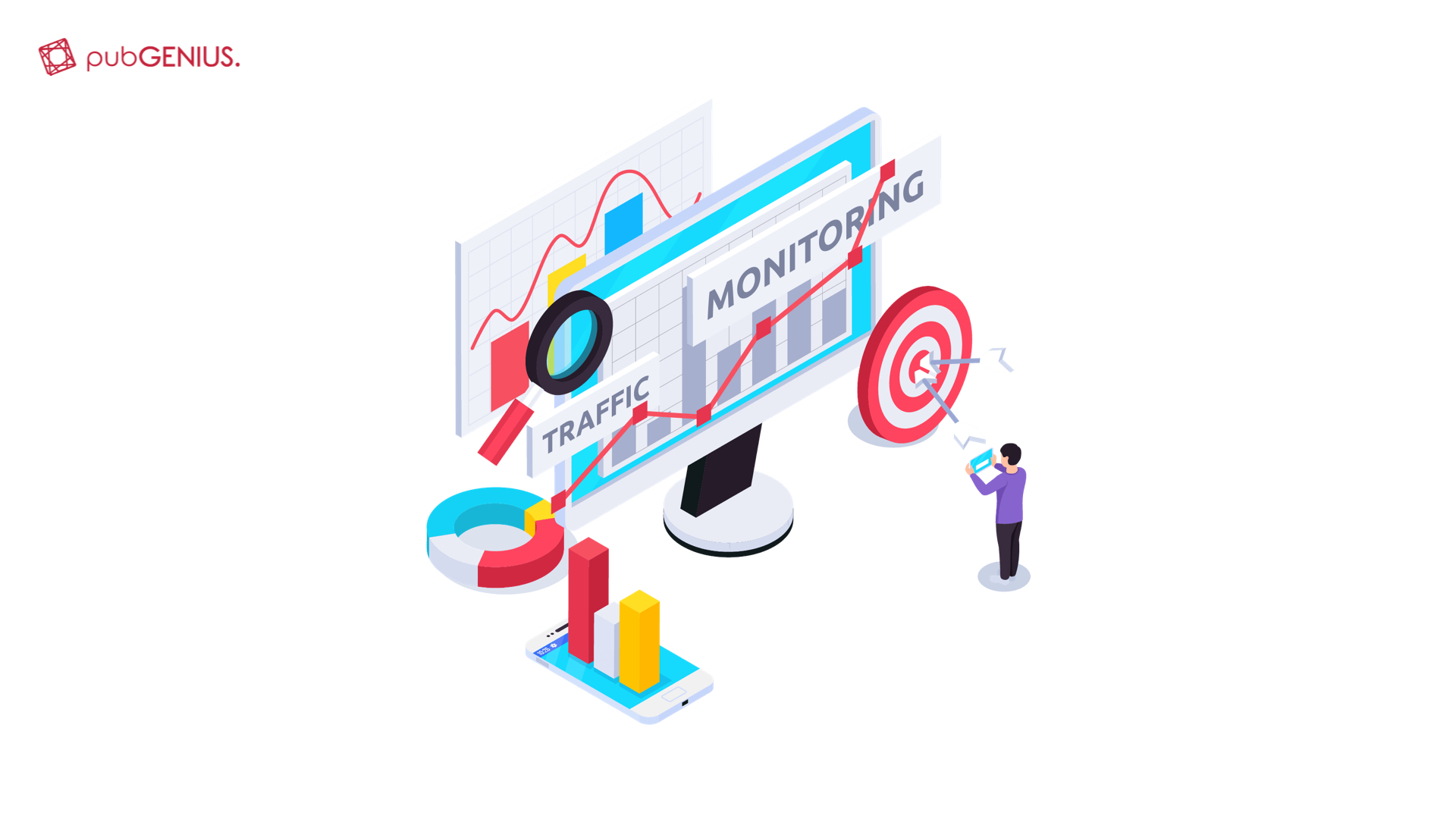Client-Side vs. Server-Side Header Bidding
August 17, 2021
Client-Side Header Bidding vs. Server-Side Header Bidding.
Which is better?
Even though header bidding is a relatively new technology, in just a few years it managed to become a large and fundamentally important part of programmatic advertising.
Publishers began using header bidding to sell their digital inventory in 2015, as an alternative to the most common at the time waterfall approach that passed bids from one exchange to the next in a sequential order. 2016 is considered to be the year when header bidding started gaining mainstream popularity and became a disruptive force in the ad industry.
Today, the majority of web publishers are already using header bidding. According to a survey by ad serving company Adzerk, almost 80% of all publishers were using header bidding in March 2019. A 2021 report by Statista says that in the first quarter of this year, 67.8% of online publishing websites and 17.5% of the top 100 thousand websites in the US used header bidding. On the global level, the adoption rate among the top 100 thousand sites was a bit lower — 13%.

What is header bidding?
Header bidding (also known as advance bidding, pre-bidding and holistic yield management) is a programmatic advertising technique that allows publishers to offer each impression to multiple ad exchanges simultaneously before sending requests to ad servers. Being an alternative to the traditional ‘waterfall’ demand, in which publishers offer inventory to ad exchanges and SSPs by passing impressions from one partner to the next until a bid is accepted, using header bidding provides publishers with a slate of benefits. They can collect multiple bids from various sources, such as DSPs and ad networks connected to SSPs or ad exchanges. Publishers using header bidding can see which demand sources are placing the bid, and how much every bid is. Bids are competing against each other in real time before a publisher’s ad server is called. All these features allow publishers to maximize their ad revenues by selling their inventory at the highest CPM possible.
Even though header bidding is a technology that is supposed to make the ad buying process more beneficial to both sides, publishers and advertisers, in reality actual benefits for a publisher can vary. The way header bidding is implemented by the publisher is one crucial factor affecting the end results.
There are two main types of header bidding integration: client-side and server-side. As usual, both have their sets of pros and cons, so let’s talk about them in more detail.
What is client-side header bidding?
In client-side header bidding, the real-time auction code is added to the publisher’s website. It is executed within the users’ browser each time one of the pages of the website is loaded. When the code is executed, it sends an ad request to the publisher’s demand partners. The demand partners are starting to send bids in return, with the highest bid winning the auction. After that, the ad gets served.
In client-side header bidding, the user’s browser handles the entire process of the auction. Client-side is considered to be the more ‘traditional’ model when this technology started to gain momentum. And still is the most common now.
What is server-side header bidding?
In server-side header bidding, the real-time auction code is added to a dedicated central server hosted by the technology provider. When a page of the publisher’s website is loaded, the browser sends one request to the auction server, which selects a winning bid and serves the ad.
Server-side header bidding is a newer solution meant to serve as a better alternative thanks to a number of its strengths.
Client-side vs. server-side header bidding. Pros and cons
Now let’s take a look at the differences between these two models as both come with their sets of advantages and disadvantages.
Pros of client-side header bidding
-
Better control and visibility for publishers.
Since the auction code is hosted on the website and is executed in the browser, with client-side header bidding publishers have a lot more control and visibility over the process. They are free to make adjustments, such as adding or removing partners or setting bidding timeouts.
-
Better ad targeting (higher bids, more ad revenue for a publisher).
With client-side header bidding, advertisers can easily identify specific users through cookie matching. This allows them to run ad campaigns with more precise targeting. In server-side header bidding, the user ID data needs to be delivered from a central server, which results in higher failure rate. As a result, advertisers are ready to make higher bids for client-side ad offers.
-
More common and widely accepted.
Client-side header bidding is also the most common implementation method for this technology today, so it is easy for publishers using it to find demand partners.
Cons of client-side header bidding
-
Higher latency.
As the code that runs the whole bidding process executes in a user’s browser, it results in longer page load time, especially if the user is accessing the website with a low-speed Internet connection.
-
More difficult and time-consuming for publishers.
Setting up and running your own header bidding technology stack, which is what client-side approach actually is, naturally requires more time and effort. Both initially, to add the code set up the process, and along the way, managing issues with browser compatibility and updates.
-
Bidder limit and duplicated bids.
The number of demand partners in client-side models is typically limited. A high number of bidders also adds to the page latency. Additionally, a high number of demand partners increases chances of duplicated bids.
Pros of server-side header bidding
-
Unlimited bidders.
With server-side bidding, on the other hand, publishers are free to add as many bidding demand partners as they want. As the browser only has to make one call to the auction server, there are no extra latency issues regardless of the number of bidders supported.
-
Lower latency.
The whole process, from sending requests to selecting a winning bid, is handled by dedicated auction servers provided by a specialized heart bidding provider. So it gets completed faster and causes no latency issues.
-
Easier for a publisher to implement.
Another big advantage of server-side header bidding is that the provider handles all the aspects of this process, so it is much easier for a publisher.
Cons of server-side header bidding
-
Lower revenues.
There are two main factors contributing to publishers who utilize this method getting lower ad revenues. First, auction server providers charge publishers fees for their services. Second, as we mentioned earlier, cookie matching is not as effective with the server-side method, resulting in worse targeting quality. And thus, lower bids from advertisers.
-
Poor visibility.
As the process is handled by a third-party provider, publishers have no visibility of the bidding process.
-
Lack of control.
Naturally, publishers have very little control over the process as well. Publishers input is typically limited to setting the floor price for the auction.

Summary: Which method is better?
As you can see by now, both client-side and server-side header bidding implementation methods have their pros and cons. So choosing the one to implement is very individual and depends on the specific needs of a publisher. Server-side allows you to provide better user experience and minimize the time required to manage the process. Client-side, on the other hand, gives you more control and helps to maximize the revenue.
So in order to make the choice, it is advisable to try both methods, analyzing their performance and issues along the way. Or just let professionals with proven expertise in programmatic ads take care of your operations.
This is us! pubGENIUS’ ad ops specialists are well-versed in the best practices and trends of the industry. We know how to utilize innovative programmatic ad technologies to optimize the ad sale process and achieve maximum revenues. We will make sure that your websites are using the most relevant tools and your ad inventory is set up and operating with maximum capacity at all times.
Get in touch with pubGENIUS Team to get free consultation 🙂



